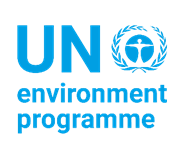The world is making progress in curbing methane emissions, but faster and broader action is needed to keep global temperature rise in check, according to a new report by the United Nations Environment Programme (UNEP).
The report, released by UNEP’s International Methane Emissions Observatory (IMEO), shows that government and industry responses to more than 3,500 satellite-based methane alerts have jumped from 1 per cent to 12 per cent in the past year. Despite the improvement, UNEP warns that the pace must accelerate to meet the Global Methane Pledge target of reducing methane emissions by 30 per cent by 2030.
IMEO’s latest publication, An Eye on Methane: From Measurement to Momentum, finds that oil and gas companies under the Oil and Gas Methane Partnership 2.0 (OGMP 2.0) are now tracking one-third of global production using real-world measurements— a significant step toward accurate emission reporting and accountability.
“Reducing methane emissions can quickly bend the curve on global warming, buying more time for long-term decarbonization efforts,” said Inger Andersen, Executive Director of UNEP. “But reporting progress must now translate into real emission cuts. Every company should join OGMP 2.0, and both governments and operators must respond to satellite alerts — then take action.”
Industry transparency rising, but results must follow
OGMP 2.0 has become the global standard for methane measurement and mitigation in the oil and gas sector and forms the foundation of the European Union’s methane regulations.
Over the past five years, OGMP 2.0 membership has more than doubled to 153 companies, now covering 42 per cent of global oil and gas production.
Of these, 65 companies, representing 17 per cent of global production, have reached the Gold Standard for emissions reporting, meaning their data is based on direct measurement. Another 50 companies (15 per cent) are on the Gold Standard Pathway, expected to achieve full compliance soon.
Responses to satellite alerts increase but remain insufficient
UNEP’s Methane Alert and Response System (MARS) has issued over 3,500 alerts in 33 countries, using satellite monitoring and AI-driven analysis to detect major emission events.
While only 1 per cent of alerts received a response last year, the rate rose to 12 per cent this year. IMEO reports 25 cases of mitigation action in 10 countries, including six new countries in the past year.
Still, nearly 90 per cent of alerts remain unanswered, underscoring the need for stronger government and industry engagement.
MARS is also expanding to monitor methane emissions from coal mines and waste sites — sectors that have received little attention but offer significant opportunities for reduction.
UNEP expanding to steel and waste sectors
IMEO is scaling up its Steel Methane Programme, which targets emissions from metallurgical coal used in steelmaking. Methane from this source adds about one-quarter to the steel industry’s climate footprint but could be mitigated at just 1 per cent of production cost.
The programme will introduce a new Steel Methane Transparency Database to combine satellite data, empirical studies, and industry collaboration, enhancing transparency across the steel sector.
IMEO has also supported 46 peer-reviewed methane studies across six continents — covering emission measurements from oil and gas facilities and assessing methane output from rice paddies and livestock.
Additional Quotes
“Methane is one of the most potent greenhouse gases. Tackling it is among the fastest ways to slow global warming. Europe’s new methane regulation reflects our determination to cut emissions through credible data and transparency,” said Dan Jørgensen, European Commissioner for Energy and Housing.
“Methane mitigation begins with accurate, actionable data. Japan’s CLEAN initiative and JAXA’s GOSAT-GW satellite will support UNEP’s Methane Alert and Response System to turn observations into real mitigation,” said Takehiko Matsuo, Vice-Minister for International Affairs, Ministry of Economy, Trade and Industry, Japan.




















